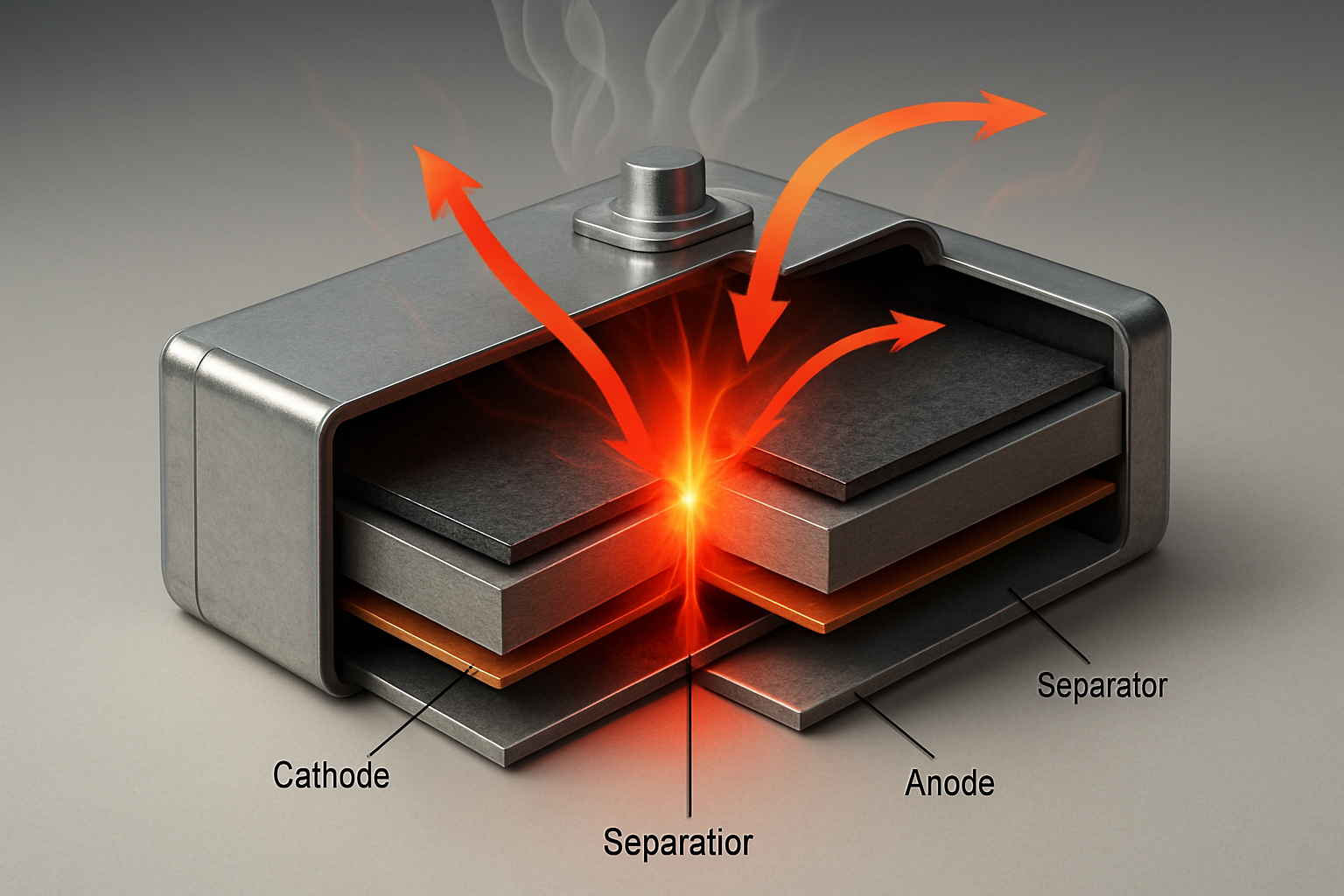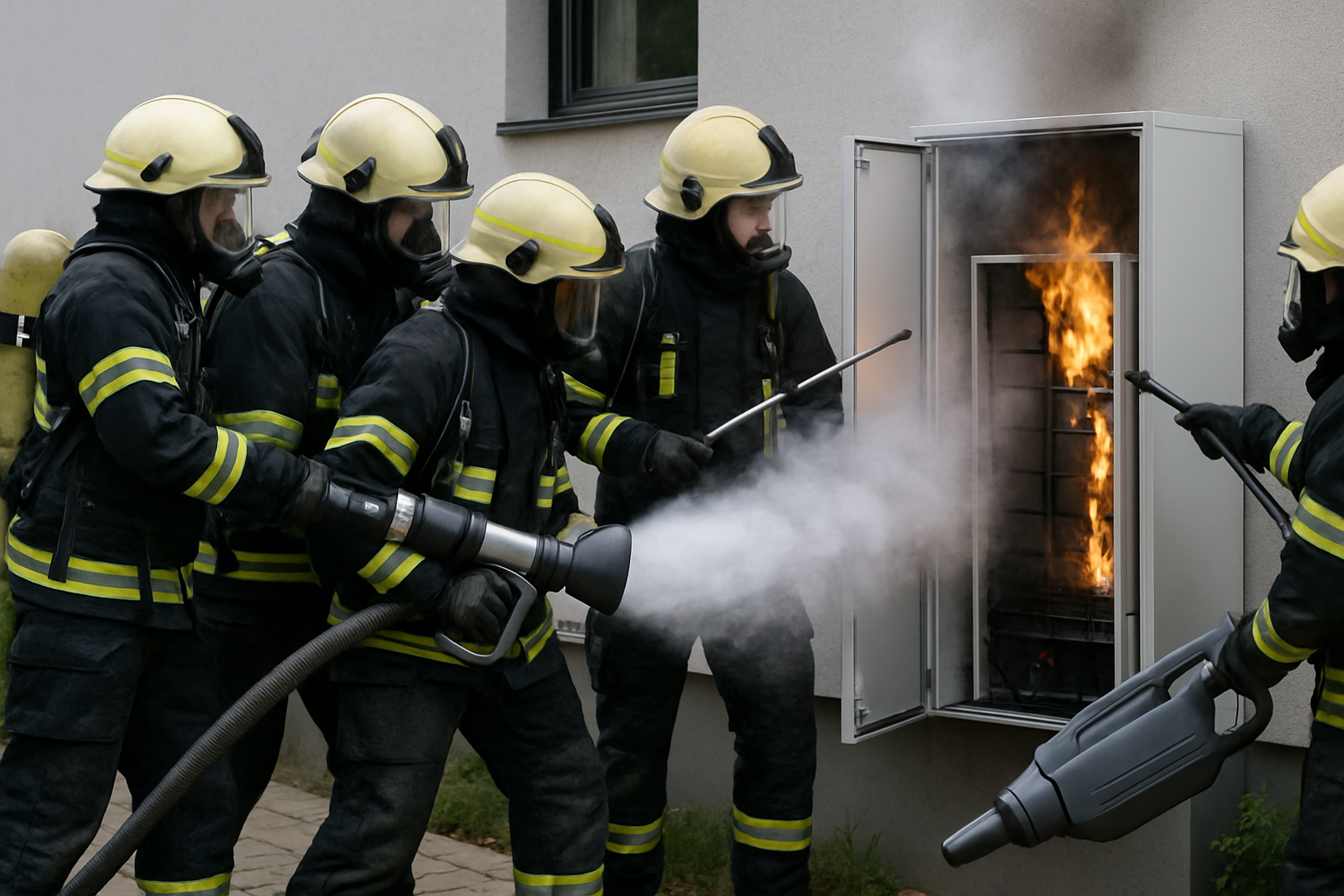Lithium-ion batteries are the core of modern home energy storage, offering high energy density and a long lifespan. While remarkably reliable, it is important to recognize the early warning signs of a potential malfunction. Identifying the first indications of a lithium battery overheating is key to preventing a serious safety event known as thermal runaway. This knowledge empowers you to act swiftly and protect your home and investment.
Understanding Thermal Runaway in Lithium Batteries
Thermal runaway is a chain reaction where an increase in temperature causes further increases in temperature, potentially leading to fire or explosion. It begins when the heat generated within a battery cell exceeds the amount of heat that can be dissipated. Recognizing the precursors to this event is your most effective safety measure.
What Happens During Overheating?
Initially, a fault like an internal short circuit can cause a localized temperature increase. If this heat isn't controlled, it can trigger a breakdown of the battery's internal components, including the solid electrolyte interphase (SEI) layer. This decomposition releases more heat and flammable gases, creating a self-sustaining cycle that can quickly escalate. Once this process begins, it can be very difficult to stop.
Why Early Detection Is Critical
The progression from initial overheating to full thermal runaway can sometimes offer a critical window for intervention. Detecting a problem in its earliest stages, such as through a sudden voltage drop or a slight temperature rise, allows for immediate safety measures. This proactive approach can prevent catastrophic failure, protecting both property and personal safety. According to the National Fire Protection Association (NFPA), you should immediately stop using a device if the battery exhibits unusual signs like strange odors or excessive heat.
Sensory Clues: What to Look, Smell, and Listen For
Your senses are powerful tools for detecting an overheating battery. Paying attention to changes in your home energy storage system can provide the earliest warnings of a problem.
Visual Indicators of an Overheating Battery
A physical inspection can reveal clear signs of distress. Look for any bulging, swelling, or deformation of the battery casing. This indicates a buildup of gas inside the cell, a primary symptom of overheating and internal failure. Also, check for any fluid leakage or discoloration on the battery's exterior.
Distinctive Odors as a Warning Sign
One of the most commonly reported signs of a failing lithium-ion battery is a strange smell. This odor is often described as a sweet, chemical, or metallic scent, sometimes similar to nail polish remover. This smell is caused by the venting of electrolyte gases from the battery cell. If you notice such an odor, it is a serious warning that requires immediate attention.
Unusual Sounds from Your Battery System
An overheating battery may also produce audible cues. Listen for hissing, popping, or crackling sounds coming from the battery unit. These noises can indicate that pressure is building inside the cells and gases are being released, often a precursor to a more significant failure.
Data-Driven Warnings from Your Battery Management System (BMS)
While sensory clues are vital, your system's built-in electronics provide the most precise method of early detection. A high-quality Battery Management System (BMS) is the brain of your energy storage system, designed to prevent conditions that lead to thermal runaway.
The Role of the BMS in Monitoring Temperature
The primary function of a BMS is to continuously monitor the voltage, current, and temperature of each cell in the battery pack. It is programmed to operate within specific safe temperature ranges. If any cell exceeds these thresholds, the BMS is designed to trigger alerts and protective actions.
Interpreting Temperature Alerts and Fault Codes
Familiarize yourself with your system's monitoring software or display panel. The BMS will issue specific fault codes or high-temperature warnings if it detects an anomaly. These are not suggestions; they are direct commands to investigate a potential issue. A well-designed BMS may even automatically disconnect the battery to prevent further heating as a safety measure.
Correlating Performance Drops with Overheating
A sudden and unexpected drop in your battery's performance can also be an indicator of an internal problem causing heat. Consistent performance monitoring is key. As detailed in the ultimate reference for solar storage performance, tracking your system's efficiency can help you spot anomalies, including those related to cell health and temperature, which might otherwise go unnoticed.
Immediate Actions Upon Detecting Overheating
If you detect any of the signs mentioned—be it a strange smell, a visual change, an unusual noise, or a BMS alert—you must act immediately. Your safety is the top priority.
Safety First: Evacuation and Isolation
If you suspect your battery is overheating, the first step is to ensure everyone's safety. Evacuate the immediate area. If it is safe to do so and your system has an emergency shutdown procedure, follow it to disconnect the battery from all loads and charging sources. Do not attempt to cool the battery with water. If you see smoke or flames, leave immediately and call 9-1-1.
When to Call for Professional Help
Any sign of overheating is cause to contact your system installer or a qualified technician. Do not attempt to diagnose or repair a potentially faulty lithium-ion battery yourself. Professionals have the tools and training to safely handle these situations and determine the appropriate course of action.
A Vigilant Approach to Battery Safety
Ultimately, the safety of a home energy storage system relies on a combination of quality components, professional installation, and vigilant ownership. By understanding the early warning signs of an overheating lithium battery—from subtle odors to critical BMS alerts—you can act decisively. This proactive awareness is the most powerful tool you have to ensure the long-term safety and reliability of your energy independence.
Frequently Asked Questions
Can a battery overheat even when not in use?
Yes, a battery can overheat while in storage or idle, although it is less common. This can happen due to a pre-existing manufacturing defect or internal damage that creates a slow internal short circuit, which generates heat over time.
What is the ideal operating temperature for a lithium battery?
Most lithium-ion batteries for home storage perform best in a controlled environment, typically between 5°C and 20°C (41°F and 68°F). Consistently operating the battery in high ambient temperatures can reduce its lifespan and increase safety risks. Always refer to the manufacturer's specifications for the exact optimal temperature range.
Does the battery chemistry, like LiFePO4, affect overheating signs?
While different lithium-ion chemistries have different thermal stability profiles—with Lithium Iron Phosphate (LiFePO4) being known for its higher thermal runaway threshold—the fundamental signs of overheating are similar across all types. Any lithium-ion battery can fail if damaged or subjected to abusive conditions, so visual, olfactory, and auditory warnings should always be taken seriously regardless of the specific chemistry.





Leave a comment
All comments are moderated before being published.
This site is protected by hCaptcha and the hCaptcha Privacy Policy and Terms of Service apply.